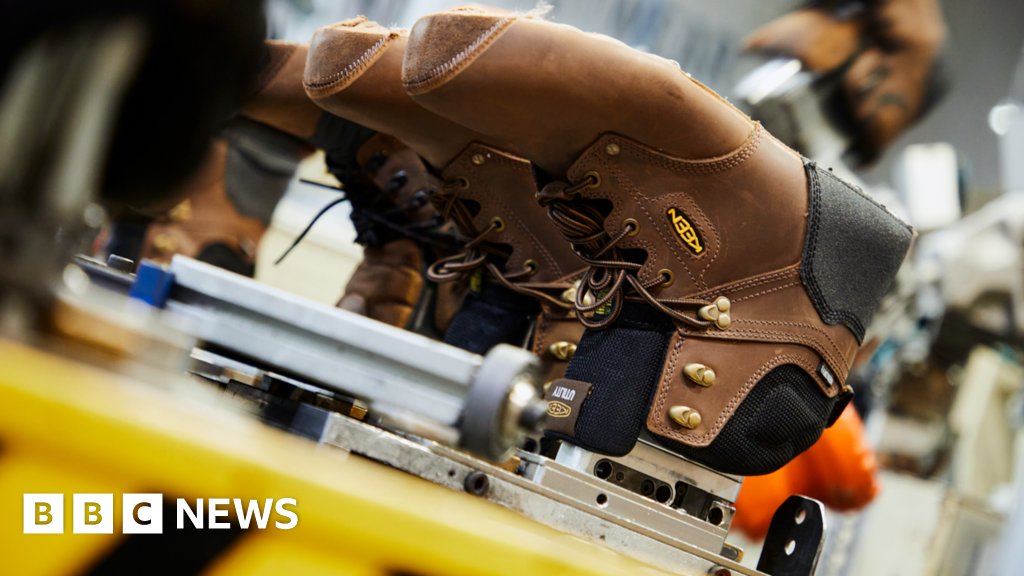ARTICLE AD BOX

Flic was a NHS physiotherapist
By Vishala Sri-Pathma
Business reporter
"I was very independent. I climbed Mount Kilimanjaro. Now I need help washing my hair," says Flic, who contracted long Covid whilst working as a children's physiotherapist in the NHS.
She is among the two and a half million people who are not working due to health problems - a new record in the UK.
For every 13 people currently working, one person is long-term sick.
The absence of their skills from the workforce is starting to take its toll on productivity - and may start to impact long-term growth, according to economists.
"People being off work is inevitably going to be bad for business and the economy," says Tony Wilson, director at the Institute for Employment Studies.
"If firms can't meet demand because they have to fill jobs, it might mean they have to pay people more to fill those jobs or... close their business down because they can't cope.
"It impacts overall productivity and might also mean less competition," he adds.
One of the reasons why the UK economy has been doing less well than other developed nations has been the case of the missing workers, after millions stopped working during the pandemic.
There are 400,000 more people not in employment or looking for employment than there were before the pandemic, Darren Morgan, director of economic statistics at the ONS, told the BBC.
As well as an increase in mental health conditions and back and neck pains that may be linked to home working, Mr Morgan said there had also been "an increase in the category that includes post-viral fatigue, so perhaps long Covid having an impact".
The ONS points out that rising work-limiting health problems predate the pandemic. In 2016, some 15.4% of 16 to 64-year-olds reported these, rising to 16.4% in 2019. This went up even further to 18.1% of the population in 2022 - roughly 7.5 million people.
Flic worked through the pandemic, visiting patients in their homes just after they'd been discharged from hospital.
"I felt just whipped up all the time, but I put it down to exhaustion. I soon became too ill to work and took unpaid leave for five months.
"An antibody test confirmed I had Covid and when it didn't go away I realised it was long Covid," she says. "It's completely turned my life upside down."
Tony Wilson of the Institute for Employment Studies says "presenteeism" - working when sick - is worse than being off sick because it means people are ill for longer. "The workplace should adapt around the employee and try and ensure jobs work for people," he says.
Tom Pollard, head of social policy at the New Economics Foundation, says besides the immediate consequences of people not working, there are "knock-on costs" of people being off sick long-term.
"It tends to snowball as the longer people are out of work the longer it takes to get back into the office. It's a tough cycle to break," he says.
Getting these people back into employment is a key part of the government's plan to get the economy growing again.
The March budget included changes to the rules around health-related benefits and universal credit aimed at helping to address the shortage of workers.
The latest figures show mixed progress on this front.
Significant numbers of students, carers and even some retired people have been going back to work, pushing the inactivity rate - the key measure of people not in work - down to 21% - the lowest level in three years.
However, the rise in the number of people too ill to work is likely to worry policymakers.
How can I avoid back and neck problems?
By Michelle Roberts, digital health editor
Sitting with proper posture is one of the best things you can do to prevent back and neck problems.
So it is easy to see how spending long hours sitting at a desk, hunched over a laptop could be bad for you.
The latest data from the ONS suggests musculoskeletal issues are on the rise, and likely linked to the shift to home working that happened to many of us during the pandemic.
If you use a home workstation, the advice is to make sure the top of your computer screen is level with your eyes and about an arm's length away from you.
You should be able to relax your shoulders when you are typing and keep your elbows at 90 degrees.
Take regular breaks too to stand up, stretch and move around.
If you have neck or back pain, chat with your doctor or see a physiotherapist.
Employers are also required by law to protect the health and safety of their workers.

 2 years ago
37
2 years ago
37








 English (US) ·
English (US) ·